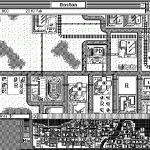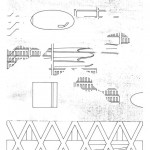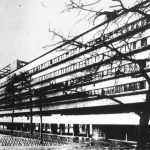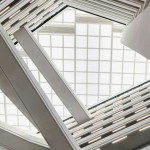
In 1919 Louis Renault, a talented engineer and head of the « Société des Automobiles Renault» began to acquire the “Île Seguin“, an island in the river Seine in the southwest area of Paris. At first, this land was supposed to become a recreational area for the workers of the nearby Renault factories of the “Trapeze”, a site on the right side of the Seine in Boulogne-Billancourt as well as for those employed in the plants on the south side in Meudon. Apparently, it was after his visit to the Ford Plants in Detroit, that Louis Renault made the different choice to transform the island into an ultra-modern plant where he could apply the same new logistic methods and techniques Henry Ford was experimenting in the US.

Between 1923 and 1935 almost the whole surface of the island was bought by Renault and transformed into a multi-leveled factory, composed at first by several detached buildings. The soil was upraised and foundations were laid 10m down on the earth. Two metallic bridges connected the île Seguin to the Boulogne Billancourt factory on the North and to the Meudon factory on the Southside to assure the continuity of the production.


The Renault plant was developed over time and began to slowly coincide with the whole island, occupying its entire surface and adopting its shape with its exterior walls directly plunging into the river. The island/factory was energetically autonomous thanks to an electric power plant that was contained in a building designed and constructed by architect Albert Laprade between 1929 and 1931. The island hosted several testing sites, including an underground racetrack and a boarding bridge that was included to ship the vehicles by the river.

The history of the Île Seguin Plant crosses that of its country: in 1936, the Renault plant became a symbol of working-class struggles with the largest concentration of strikers in France. During World War II the plant produced trucks for the occupying enemy and Louis Renault was thus accused of collaborating with the Germans. The plant was severely bombed by the allied forces and Renault died in prison shortly before his process started in 1944.
In 1945 the plant was nationalized and during the 1950s the production increased dramatically. This success was largely granted by the great popularity the 4CV, (produced in series in the plant), acquired nation-wide and in Europe. Ten thousand workers were employed on the island at that time.
From 1947 to 1949 the new façades for the island/factory on the Boulogne side were built following Albert Laprade design, the new elevations were supposed to envelop the old and the new buildings on site and give the whole complex a monumental look.
During 1968 the island became a major center of revendications by the workers, hosting multiple strikes.

In 1989 the shutting of the factory was announced, its machinery and spaces not any more suited for the contemporary production processes, and the last car was built in 1992. Since that time the demolition of the building started and the depollution process and asbestos removal is still going on. Several different projects have been proposed and dismissed until today: the further evolutions of the island are still so complex, that maybe the future of this history-rich place will be the subject of another post. In the meantime you can check the research work by our friend and videomaker artist Jerome Wurtz about the factory, its workers and its legacy.






Images via:
L’Ile Seguin dans le retroviseur
Edouard Bergé
Memoire de l’usine Renault et de l’Ile Seguin
Urban exploration of the site:
Usine Renault Ile Seguin
Further reading:
Ile Seguin…. l’île des sciences et de la culture… une aventure
Topos N° 12 du CAUE 92 (ISSN 07 64 39 18)
L’île Seguin, de Gilbert Hatry et Pierre Mercier (ISBN: 2-902-667 14-0)




Thanks for a great write up. Seriously interesting.
Here’s what it looks like on Google Maps now: https://www.google.com/maps/@48.8217916,2.2395438,3a,75y,317.09h,92.03t/data=!3m6!1e1!3m4!1sTOOpBzZpoeP0nXe_Ag2BIA!2e0!7i13312!8i6656?hl=en